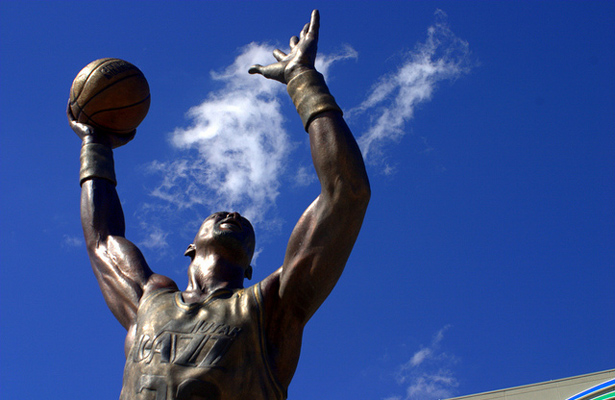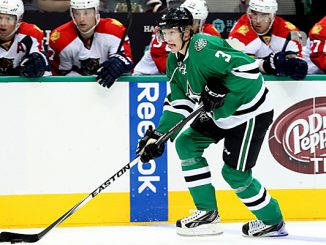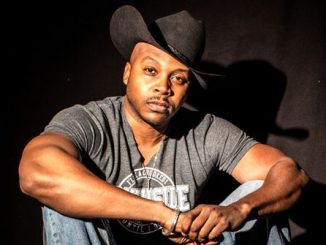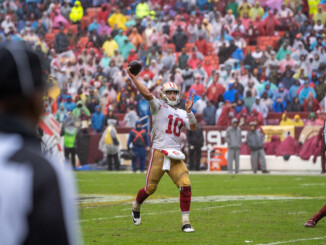
Struck by the way he made his way to the stage after having his name called by then NBA Commissioner David Stern caught my attention. Looking like an “extra” from Saturday Night Fever dressed in white slacks that appeared to be two sizes too small, a blue polyester blended blazer and a 4″ thick square tip white neck tie to accent the outfit, Karl Malone had been selected by the Utah Jazz with the #13 overall pick. After the customary handshake with the commissioner and the donning of the team cap, Malone made his way to the interview area just west of the stage. What followed was a constant flow of tears from this massive 6’9″ human.
Rushing over to my 13″ Zenith color television in my bedroom to turn the volume back up, since it had been muted by me after the disappointment in the Dallas Mavericks selection five picks earlier. I had to hear what Malone had to say. The reporter interviewing him assumed it was “tears of joy” flowing from the ducts in his eyes. Although there had to be an element of joy to be fulfilling what I’m sure was a childhood dream, Malone was actually crying because he wasn’t a Dallas Maverick.
With family ties to the Metroplex and just a short three hour drive from his home town of Summerfield, Louisiana, Dallas was the ideal NBA home for him. Pre-draft interviews with the Mavericks front office staff of Norm Sonju, Rick Sunday and Keith Grant went great. So great that they assured him that if he made it past Sacramento with the #6 pick, they would take him at #8 knowing that Golden State coveted St. John’s Chris Mullin at #7. The German born Detlef Schrempf proved to be too enticing to pass up. He was chosen instead of Malone.
It was well known throughout the league that team President Norm Sonju loved and admired the Boston Celtics. A team that competed and won championships. Also, a team that was aesthetically pleasing to the eyes of the paying fan. A team constructed with a majority of white players, led in part by a white superstar in Larry Bird. In a league that saw the 1970’s 79% African American, it was considered “refreshing” to the fans in the historically racially biased Boston, Massachusetts to see a team constructed so differently. This also resonated throughout the league in a lot of NBA cities. Quite frankly, the revenue generated at the arenas throughout the league was being done by crowds that were 90% white.
Dallas, Texas had its own share of racial angst and injustices as with most large metropolises. It last had a professional basketball team in 1973 with the ABA’s Dallas Chaparrals. The Chaps mirrored most ABA teams of that era. Take a quick glance at the team roster and what you mostly saw were afros. Games played at SMU’s Moody Coliseum only drew an average of 2,000 fans. The stigma that went along with the image of a black dominated league and team in a still segregated Dallas proved to be too much to overcome. The team eventually moved to San Antonio and shortly after became an NBA franchise, one we know today as the San Antonio Spurs.
In 1978, Dallas was wanting back into the ballgame. Local millionaire businessman Don Carter assembled a team of investors and proven basketball personnel. Getting an NBA franchise was gonna take a plan like no other to pass muster with the fiscal Dallas City Council. A new arena of at least 17,000 was required by the NBA if the league was going to award Dallas a new franchise. With fresh memories of an empty Moody in the days of the Chaps, it was likely that the same city council that wouldn’t help fund a new stadium for the Dallas Cowboys earlier in the decade, would most likely not approve a new downtown basketball arena.
To quote an unnamed source who was setting his political roots down at City Hall at that time, the ‘Carter Group’ had to “whiten the court” to get an approval from the city council. Basically they had to promise a team unlike those “afro laden” Chaparral teams that nobody went to support. Dallas wanted to see a competitive team constructed mostly of white players. A team like the Boston Celtics. The funding for the new arena began and the NBA awarded Dallas their new franchise.
With their very first draft pick in 1980, they chose UCLA forward KiKi Vandeweghe. A white player. He refused to play for an expansion team and held out. He was later traded to the Denver Nuggets. In 1982, needing an athletic center, they pass over LaSalle Thompson at #4 for Bill Garnett. Garnett was a very untalented white player who was rated above both eventual All Stars Terry Cummings and Dominique Wilkins on the Mavericks charts. Only the Mavericks charts.
Fast forward to the 1985 NBA Draft. With recent playoff success thanks in part to the drafting of black players like Mark Aguirre, Rolando Blackman, Dale Ellis, Derek Harper and Sam Perkins, Dallas was ready to cement themselves as an NBA power. Instead, they bombed. It must have been that promise to City Hall that led to the debacle of the 1985 draft. The team was beginning to look like those Chaparral teams of the 70’s, minus the afros of course.
Dallas passed over Karl Malone in favor of Schempf. They followed that with the selections of two more white stiffs in Bill Wennington at #16 and Uwe Blab at #17. Detroit quickly snatched up eventual Hall of Famer Joe Dumars with the #18 pick. Guess Dallas couldn’t see him fitting in here. This was the draft that would later doom the franchise as the 1980’s came to a close. They then became the laughing stock of the league in the early 1990’s.
I was just a 12-year old kid that day as I watch Karl Malone shed those tears. Understanding his disappointment as well as my own at the time. I was not yet equipped with the understanding of how race plays a part in sports. Whether we admit it or not, it does. I’m as guilty of it as the next man. If I just so happen to wander upon a table tennis match on television and one of the competitors are of African decent, I will stop down for a moment and cheer that person on. I don’t necessarily think it’s racism, but more of racial preference. I guess that’s the way Dallas felt 36 years ago. They just wanted to see their kind succeeding on the court. The Mavericks did all they could to uphold their end of the bargain. It just wasn’t in the cards for the Dallas Celtics to come to fruition.




